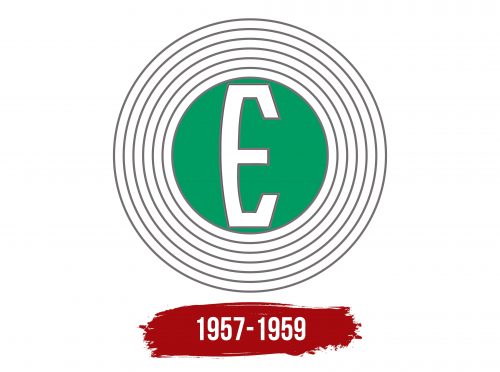The Edsel logo focuses on the convenience and comfort of the brand’s cars. The symbol overlooks many important characteristics, highlighting only the main feature. This lack of attention to detail led to the brand’s failure and rapid disappearance.
Edsel: Brand overview
In the late 1950s, Ford Motor Company created a new division, naming it “Edsel” in honor of Henry Ford’s son, Edsel Ford. Launched in November 1956, the brand was designed to bridge the gap between Ford’s fuel-efficient cars and Lincoln’s luxurious models.
The debut of Edsel cars in 1957 was met with an atmosphere of anticipation and excitement. However, despite extensive marketing promotion, the brand’s first models, released in 1958, faced serious problems. Many attributed their poor performance to unconventional designs, lack of reliability, and unclear brand positioning.
Ford’s projections of selling 200,000 cars in the first model year collapsed, as Edsel sold only 64,000 units. To compensate for the losses, the design of the 1959 and 1960 models was softened, and the budget was cut. Nevertheless, the brand was never able to shake off the falling sales.
Just two years after its grand introduction, on November 19, 1959, Ford announced the discontinuation of the Edsel division and related vehicle models. This short-lived venture netted Ford over $250 million, cemented Edsel’s place in automotive history as a cautionary example. By the time the curtain came down over Edsel, only 116,000 cars had been produced, and production was completed in the final months of 1959.
Meaning and History
What is Edsel?
It is an American automobile brand that was part of Ford Motor Company. It created a new line of mid-priced cars combining original designs. Despite significant investment and high expectations, the brand failed to attract enough buyers and was discontinued after only a few years.
1957 – 1959
The Edsel brand, once one of Ford Motor Company’s most ambitious projects, is captured in its emblem. Despite its eventual failure, the emblem reflects high hopes and expectations.
The bold letter “E” is at the center, symbolizing the brand’s name and aspiration to stand out. Encircling the “E” is a vibrant green circle, representing growth, innovation, and forward-thinking values. This green color aims to evoke freshness and sustainability.
Radiating from the circle are concentric rings, which create a sense of movement and progress reminiscent of spinning wheels. These rings hint at a target or vinyl record, adding depth to the design.
Combining the “E,” green circle, and radiating rings creates a striking emblem. It represents Ford’s optimism and high aspirations for the Edsel, aiming to symbolize innovation and progress in the automotive world. Despite the brand’s failure, the emblem remains a testament to its bold vision.





